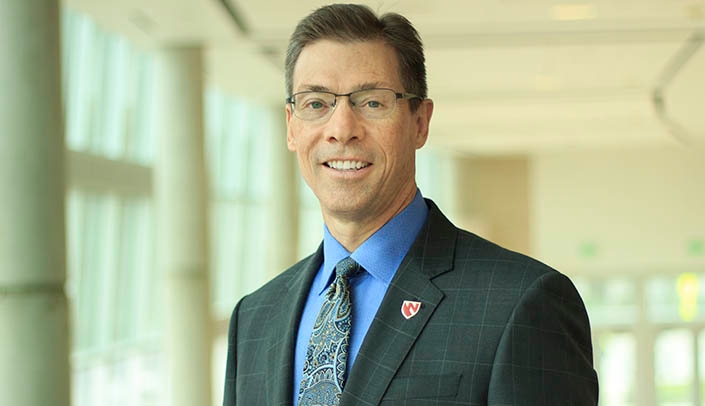To ensure both the effectiveness and efficiency of its current operations, as well as position it for continued growth, the UNMC College of Allied Health Professions will reorganize its structure based on a departmental model, similar to other colleges at UNMC.
The University of Nebraska Board of Regents on Friday approved the final reconfiguring of the college’s organizational structure, re-naming one existing department and officially establishing three others.
“The structure of an organization guides its work, helps it meet its mission, and ensures its success; structure matters,” said dean Kyle Meyer, Ph.D. “Creating the departmental structure better aligns the CAHP with the other UNMC colleges and makes sense at this time in our history.”
Since its inception in 1972 as the School of Allied Health Professions, the now-college has been structurally organized in divisions, with each of its health professions education programs representing a unique division. In recent years, the CAHP has seen its number of programs rise to the current 14, and also has added an interprofessional master’s degree program.
Dr. Meyer noted that since becoming a college in 2015, allied health has seen double-digit increases in its enrollment, personnel and extramural funding.
The departments were proposed by the leadership of the college to consolidate various programs into larger organizational units, based largely on the general function of the constituent programs. The proposal was reviewed by all members of the CAHP, and formally approved by the college’s Leadership Council before going to the Board of Regents for approval.
The regents’ approval officially established:
- The re-naming of the Department of Medical Imaging and Therapeutic Sciences as the Department of Clinical, Diagnostic, and Therapeutic Sciences. This department will house cardiovascular interventional technology, computed tomography, diagnostic medical sonography, magnetic resonance imaging, medical laboratory science, radiation therapy and radiography.
- The Department of Medical Sciences. This department will house clinical perfusion, cytotechnology, genetic counseling, medical nutrition and physician assistant studies.
- The Department of Health and Rehabilitation Sciences. This department will house physical therapy and occupational therapy.
- The Department of Allied Health Professions Education, Research and Practice. This department will house the CAHP master’s program in health professions teaching and technology, existing and new allied health interprofessional coursework and degree programs, distance education, and NU Online programs.
Dr. Meyer cited several intended benefits of the new structure including improved public awareness and branding, enhanced decision-making, leadership development, enhanced opportunities for faculty recruitment and funding, expanded IPE, and improved communication.
No new state funding was required to create the departmental structure.
